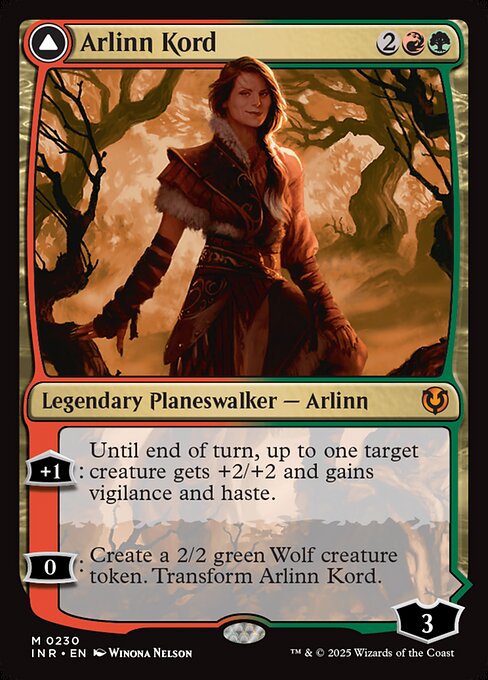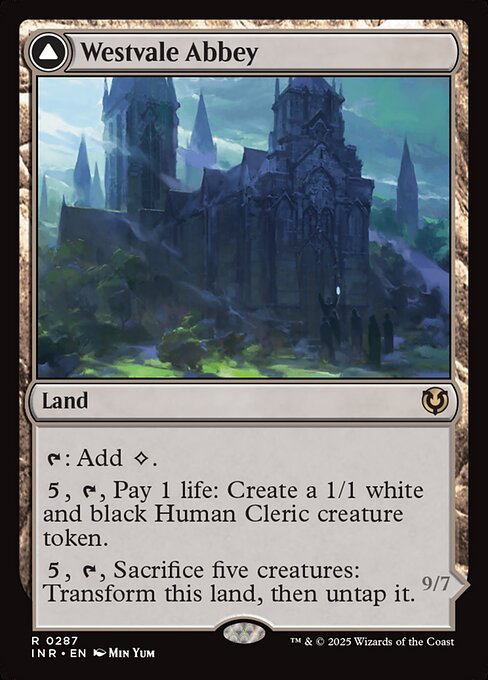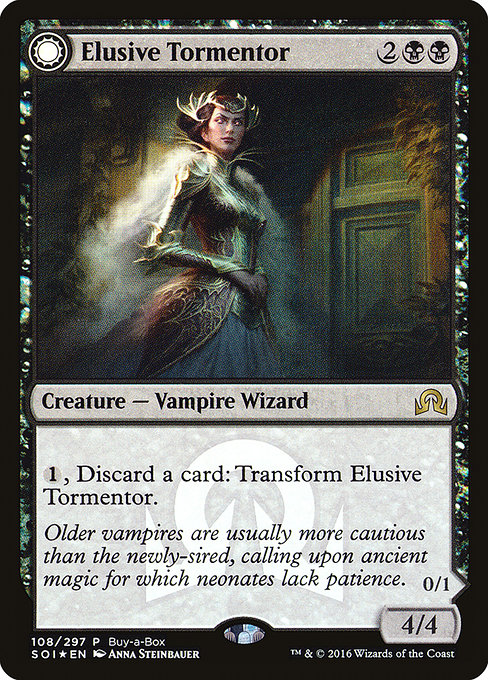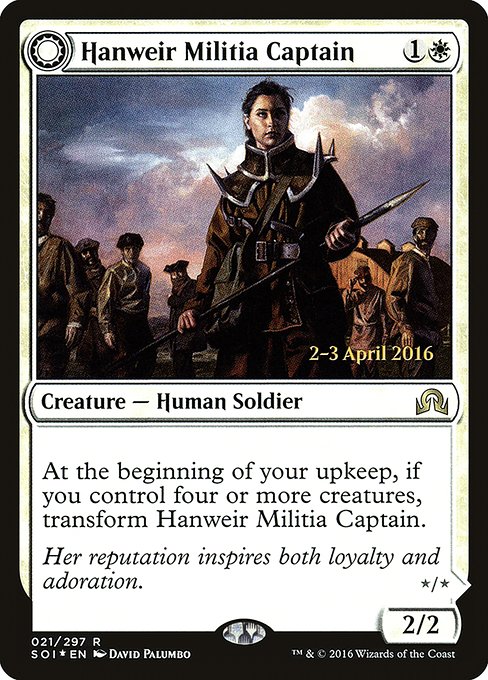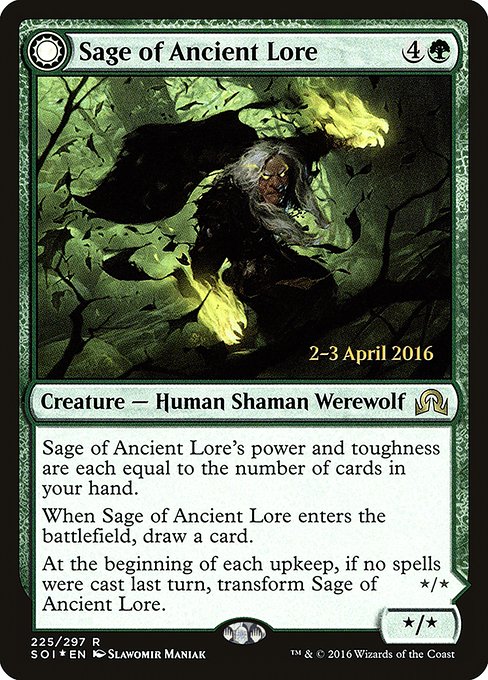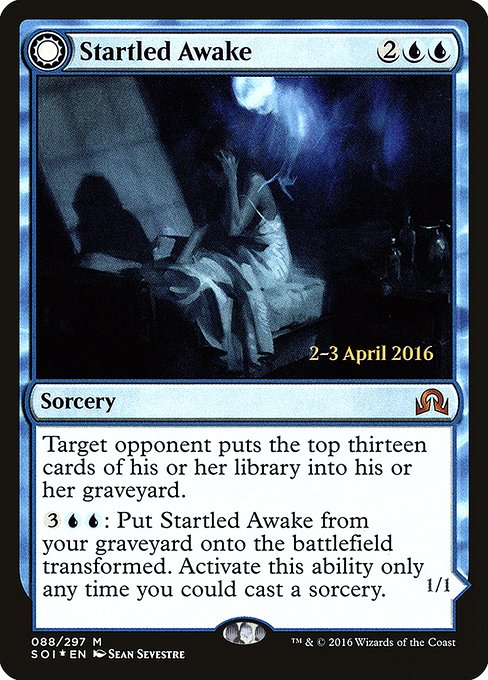Bandita delle Alture Geier // Alfa del Branco Vildin
//
Creatura — Mannaro Farabutto Umano // Creatura — Mannaro
Rapidità
All'inizio di ogni mantenimento, se nell'ultimo turno non sono state lanciate magie, trasforma la Bandita delle Alture Geier. // Ogniqualvolta un Mannaro entra nel campo di battaglia sotto il tuo controllo, puoi trasformarlo.
All'inizio di ogni mantenimento, se nell'ultimo turno un giocatore ha lanciato due o più magie, trasforma l'Alfa del Branco Vildin.
All'inizio di ogni mantenimento, se nell'ultimo turno non sono state lanciate magie, trasforma la Bandita delle Alture Geier. // Ogniqualvolta un Mannaro entra nel campo di battaglia sotto il tuo controllo, puoi trasformarlo.
All'inizio di ogni mantenimento, se nell'ultimo turno un giocatore ha lanciato due o più magie, trasforma l'Alfa del Branco Vildin.
3 // 4/2 // 3
standard
future
historic
gladiator
pioneer
modern
legacy
pauper
vintage
penny
commander
brawl
alchemy
paupercommander
duel
oldschool
premodern
Rulings
To trigger the Werewolf’s back face’s transform ability, a single player must have cast two or more spells during the previous turn. If multiple players each cast just one spell during the previous turn, the ability won’t trigger.
The abilities that transform a Werewolf back and forth look at the entire previous turn, even if the Werewolf with that ability wasn’t on the battlefield for some or all of that turn.
If you control three Vildin-Pack Alphas and a Werewolf enters the battlefield under your control, you may transform it, transform it again, and transform it a third time.
If a creature with haste transforms and no longer has haste on the same turn that it comes under your control, such as if you cast a Geier Reach Bandit when you already control a Vildin-Pack Alpha, it won’t be able to attack that turn.
For more information on double-faced cards, see the Shadows over Innistrad mechanics article (http://magic.wizards.com/en/articles/archive/feature/shadows-over-innistrad-mechanics).
The abilities that transform a Werewolf back and forth look at the entire previous turn, even if the Werewolf with that ability wasn’t on the battlefield for some or all of that turn.
If you control three Vildin-Pack Alphas and a Werewolf enters the battlefield under your control, you may transform it, transform it again, and transform it a third time.
If a creature with haste transforms and no longer has haste on the same turn that it comes under your control, such as if you cast a Geier Reach Bandit when you already control a Vildin-Pack Alpha, it won’t be able to attack that turn.
For more information on double-faced cards, see the Shadows over Innistrad mechanics article (http://magic.wizards.com/en/articles/archive/feature/shadows-over-innistrad-mechanics).
Rulings
To trigger the Werewolf’s back face’s transform ability, a single player must have cast two or more spells during the previous turn. If multiple players each cast just one spell during the previous turn, the ability won’t trigger.
The abilities that transform a Werewolf back and forth look at the entire previous turn, even if the Werewolf with that ability wasn’t on the battlefield for some or all of that turn.
If you control three Vildin-Pack Alphas and a Werewolf enters the battlefield under your control, you may transform it, transform it again, and transform it a third time.
If a creature with haste transforms and no longer has haste on the same turn that it comes under your control, such as if you cast a Geier Reach Bandit when you already control a Vildin-Pack Alpha, it won’t be able to attack that turn.
For more information on double-faced cards, see the Shadows over Innistrad mechanics article (http://magic.wizards.com/en/articles/archive/feature/shadows-over-innistrad-mechanics).
The abilities that transform a Werewolf back and forth look at the entire previous turn, even if the Werewolf with that ability wasn’t on the battlefield for some or all of that turn.
If you control three Vildin-Pack Alphas and a Werewolf enters the battlefield under your control, you may transform it, transform it again, and transform it a third time.
If a creature with haste transforms and no longer has haste on the same turn that it comes under your control, such as if you cast a Geier Reach Bandit when you already control a Vildin-Pack Alpha, it won’t be able to attack that turn.
For more information on double-faced cards, see the Shadows over Innistrad mechanics article (http://magic.wizards.com/en/articles/archive/feature/shadows-over-innistrad-mechanics).
Your collection? Your decks?
Want to manage your collection and/or create decks?
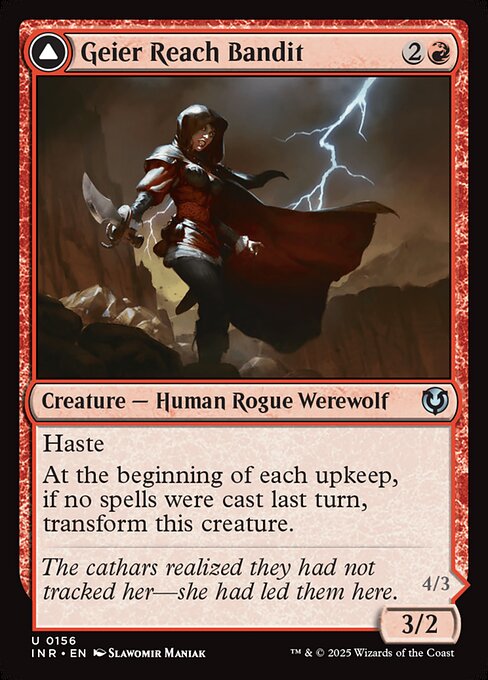



 1.62€
1.62€
